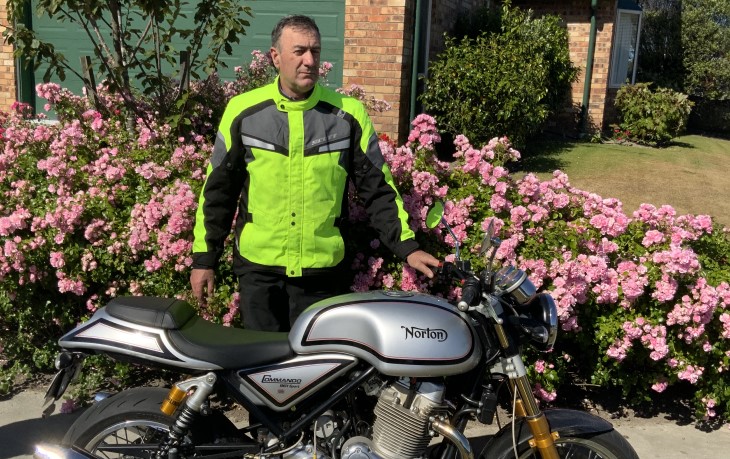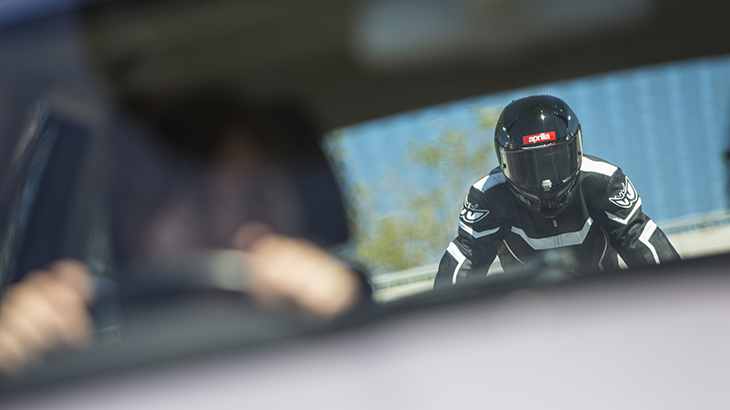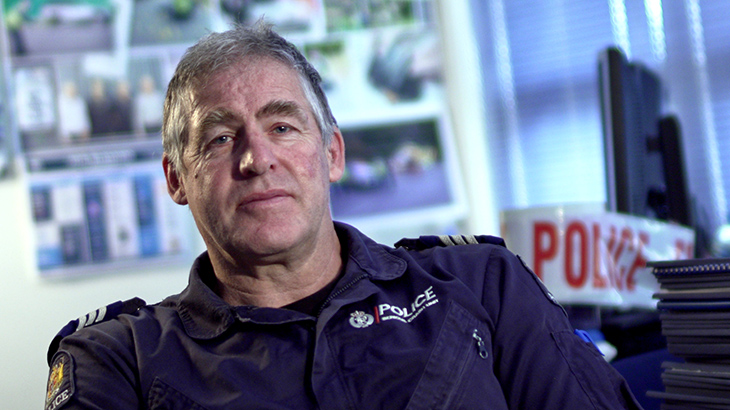Drivers urged to 'look again' as motorcycle sales soar

As motorbike sales hit record levels, one Christchurch rider shares his recovery story to help prevent others from suffering serious injury while on the roads.
You don't have to tell Davitt Lavery to take another look when he approaches an intersection – his 'shark bite' scar on his right leg reminds him of his crash every single day.
The motorcycle enthusiast knows first-hand what can happen when drivers don't look again.
In 2011, Davitt lost half the flesh below the knee of his right leg when a motorist failed to see him at a Christchurch intersection and drove into him, pinning his leg against his bike.
"My accident is always in the back of my mind," he says. "It happened in a split-second, when a driver could have looked again and easily prevented it. It changed my life forever."
The collision scuppered Davitt's prospects as a professional golfer, leaving him with what he says looks like a shark bite out of his leg. It took a year to build up the remaining muscle on his leg so he could walk normally again.
"Being a motorcyclist, you can't take anything for granted. When I ride, I go out there to survive," Davitt says. In the family car, "I always take another look. Always."
It's sage advice and even more relevant today, as this year New Zealanders have been buying motorcycles and mopeds at the fastest pace in a decade. It's part of a global trend since the COVID-19 pandemic put a halt to travel and prompted people to spend their money on other things.
At the current rate, sales are estimated to reach 9,000 bikes in 2020, up from 8,350 purchased last year, and the buying spree means our roads are busier than ever. It's a timely reminder to all road users to take more care at crash hotspots such as looking again to make sure the way is clear at intersections.
We accepted 4,360 motorcycle claims in 2019 and paid a total of $103.8m for motorcycle claim injuries.
There have been 2,758 crashes involving a motorcycle or moped at urban intersections in the past four years, Waka Kotahi (NZ Transport Agency) data shows. Of those, 538 involved serious injury and there were 38 fatalities. Drivers are at fault in 90% of crashes between cars and motorbikes at urban intersections, Ministry of Transport figures show.
"We've got to be more aware of the dangers at intersections – all of us," says Dave Keilty, ACC Injury Prevention Leader. "Look again for motorcyclists, not just the gap. Be aware of your blind spots."
In 2019
More than
Riders are
Blind spots aren't just about the limits of a vehicle's rear vision mirrors. Our brains are very good at picking out movement in our peripheral vision, but we do this by spotting familiar objects using pattern recognition, says Kevin Williams, who runs the Survival Skills advanced rider training in the UK.
The trouble is, these snapshots may not pick up the pattern of unexpected objects like a motorcyclist. It's a phenomenon known as saccadic masking and it's part of the science behind the advice to look again at intersections.
Nine years after his accident, Davitt is part of 2020's motorcycle sales boom. He took delivery of his 30th motorbike this year, one of the last Norton Commando 961 Sports to roll off the production line before the British company went into administration (India's TVS has since acquired Norton).
The Norton joins an eclectic collection of bikes, many of them restoration projects including a 1978 Yamaha 1100 which has won plaudits at shows, and a 1968 Yamaha 250. He's planning to join friends and ride the Norton down to the Burt Munro Challenge in Southland in 2021.
He's kept his pro tour members card, having qualified to play in the NZ Golf PGA Seniors Tour just weeks before his crash in March 2012, but he's more likely to be giving a golf lesson than playing a round these days. "I was never the same guy after the accident," he says.
Staying safe on the road has taken on an extra and personal dimension for Davitt. His 17-year-old son has bought a Kawasaki 600.
Davitt sent his son through a road skills course at Ornsby Motorcycle Training, one of the providers for ACC’s Ride Forever programme.
More than 23,000 motorcyclists have completed Ride Forever courses. Data shows that riders who complete a course are 27% less likely to make a crash-related injury claim.
"I've told him it's all about surviving when you're on a motorcycle," he says. "And for anyone behind the wheel of a car always take another look at intersections. Always. The lives of our riders depend on it."
Motorcycle injuries by the numbers
- 2,758 crashes involved a motorcycle or moped at urban intersections in the past four years in NZ (Source: Waka Kotahi - NZ Transport Agency).
- Of those, 538 involved serious injury and there were 38 fatalities.
- Drivers are at fault in 90% of crashes between cars and motorbikes at urban intersections, (Source: Ministry of Transport).
- Of the 4,360 motorcycle claims we accepted in 2019, they cost a total of $103.8m for motorcycle claim injuries.
- Motorcycle sales are estimated to reach 9,000 bikes in 2020, up from 8,350 in 2019.




